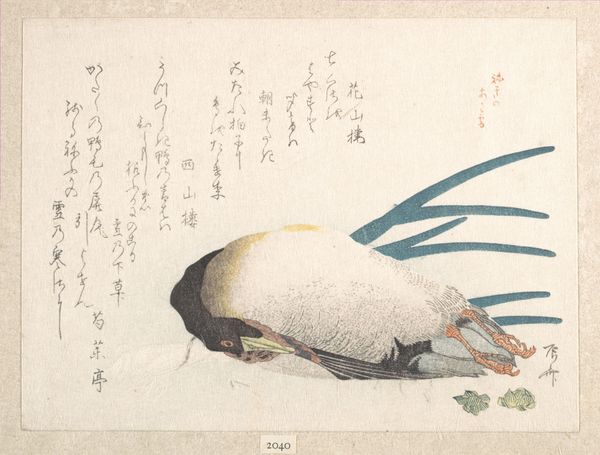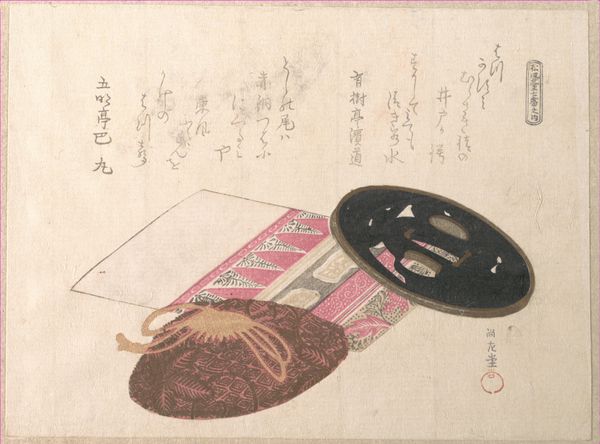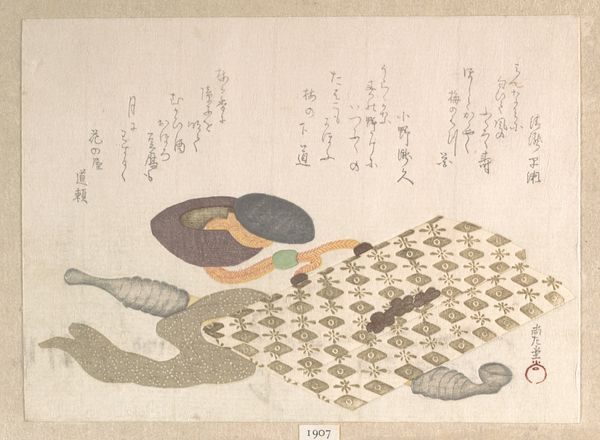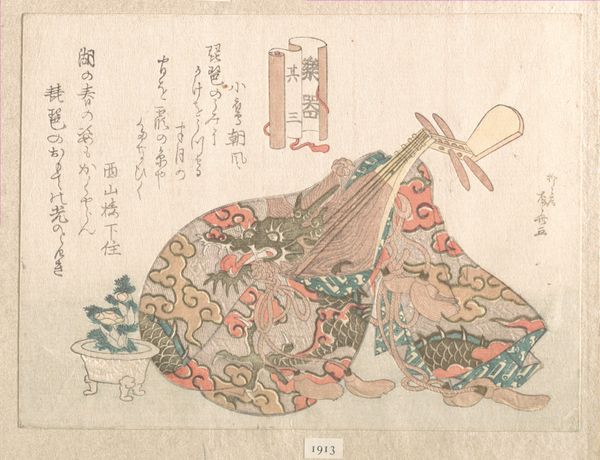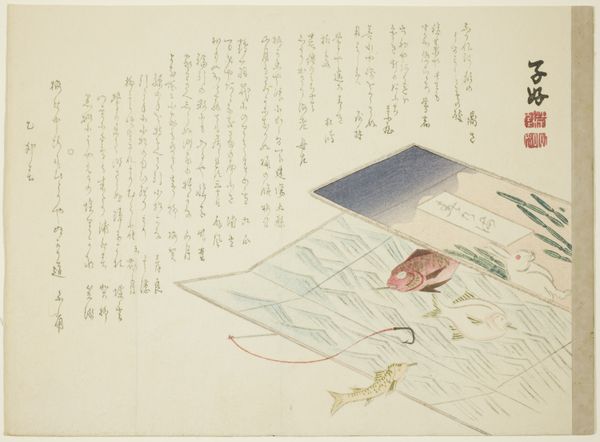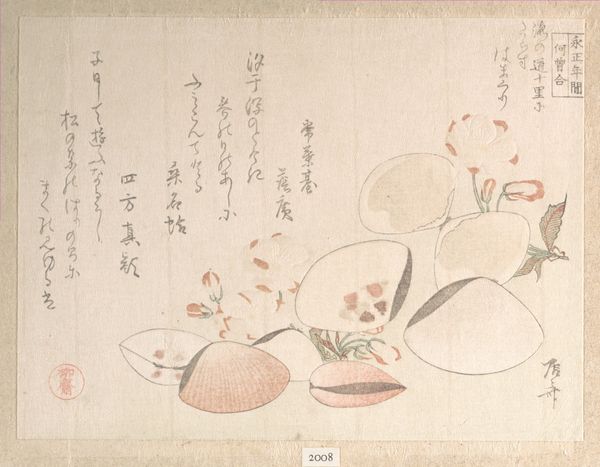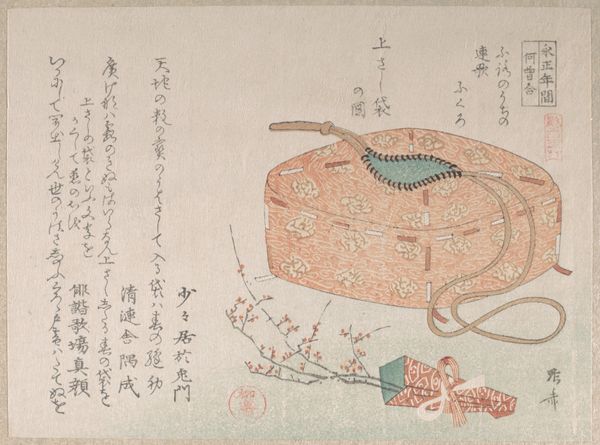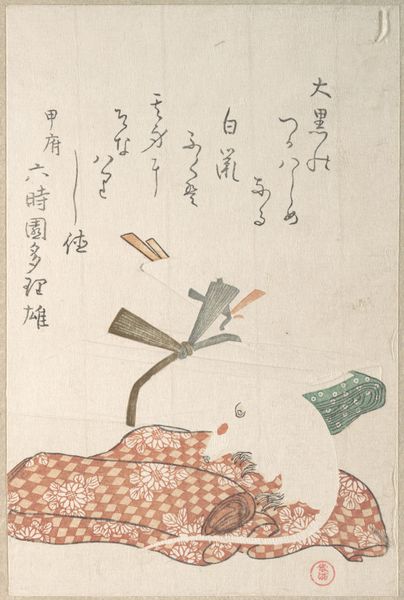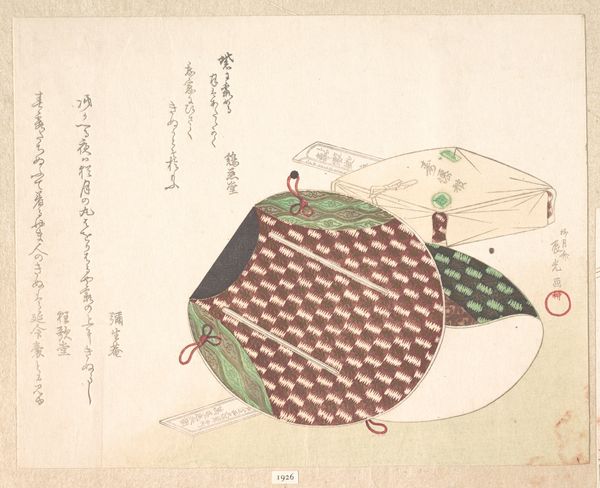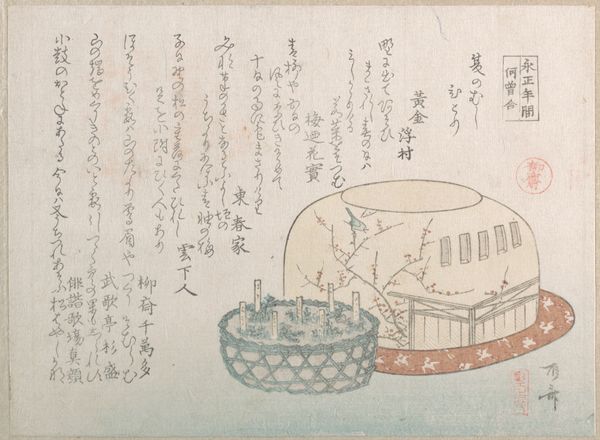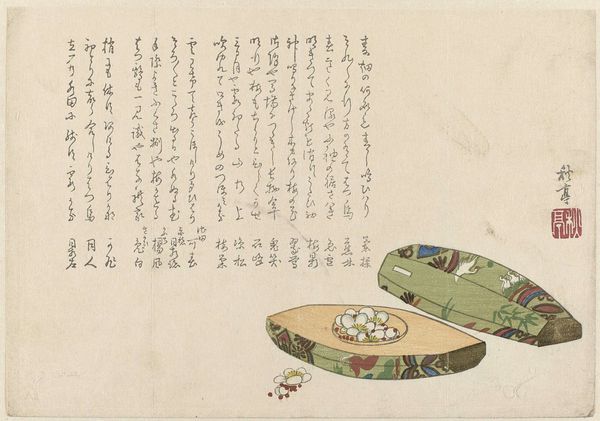
Halfbeak on a Lacquer Tray and White Baits on a Dish 1815
0:00
0:00
print, woodblock-print
#
fish
# print
#
asian-art
#
ukiyo-e
#
japan
#
woodblock-print
#
watercolour illustration
Dimensions: 5 5/8 x 7 5/16 in. (14.3 x 18.6 cm)
Copyright: Public Domain
Editor: Here we have "Halfbeak on a Lacquer Tray and White Baits on a Dish," a woodblock print created around 1815 by Ryūryūkyo Shinsai. It strikes me how the artist arranges these food items as if they're staging a still life—it's so deliberate and captivating. What stands out to you, formally speaking, about this print? Curator: Focusing solely on the visual elements, consider the interplay of shapes and lines. The elongated form of the halfbeak, positioned across the circular tray, creates a dynamic contrast. The geometric precision of the lower dish with its smaller fish offers another point of interest. It is important to also examine the colour relationships, note the interplay between the neutral tones of the fish against the decorative designs on the dishes, it adds to the work’s structural tension. Do you observe any repeating patterns or compositional echoes? Editor: I notice that the curve of the halfbeak is echoed in the curve of the tray underneath. And the horizontal lines of the small fishes mirror the horizontal orientation of the tray containing them. How much do you think the inscriptions contribute to our understanding of the visual dynamics at play? Curator: The calligraphy, while undoubtedly an integral element of the composition, is less relevant from a strictly formalist reading. A formal analysis isolates and privileges only what is perceptually available: the pure visual experience. How would our perception change if this image were cropped to exclude the inscriptions altogether? Does their absence change the core dynamics you identified? Editor: Actually, yes, it does. Without the inscriptions, the objects become more prominent, the negative space takes on a greater role. The balance feels more…stark. It emphasizes the deliberate arrangement of the still life, its inherent structure. Curator: Precisely. By attending to the structural relationships, irrespective of external factors, we gain direct access to the work's inherent logic. This direct visual interaction creates the unique reading for each viewer of art. Editor: That makes sense! I'll definitely look at artwork with an eye for their shape first.
Comments
No comments
Be the first to comment and join the conversation on the ultimate creative platform.
